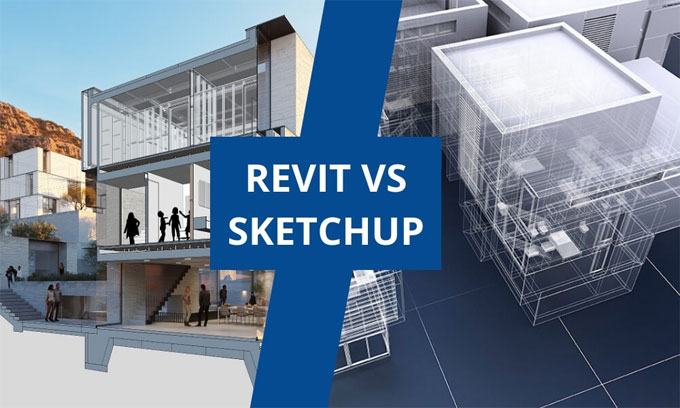Why SketchUp is Better Than Revit

Architectural design has come a long way holding the hand of rendering and designing softwares. Two most used softwares in this field to day are AutoCAD Revit and Trimble SketchUp. They have their similarities and their differences. Let us see why SketchUp is the best choice for you!
Origin: Owned by first Google and then Trimple, SketchUp is one of the most popular 3D modelling applications today.
It has integration with Google Maps and its own library called the 3D Warehouse. Not only architecture, SketchUp can work on almost any kind of 3D models. With the help of plugins (extensions), it becomes a considerable workhorse indeed.
Designed by Leonaid Raiz and later acquired by AutoCAD, Revit focuses mostly on architectural design and rendering. For construction industry professionals it comes with a formidable set of tools to visualize and create any architectural model no matter how complex.
System Load: In this criteria SketchUp is definitely on the light side. It can run on a system with 8 GB RAM and on a 1-GB graphics card, whereas Revit hungers for a 16 GB RAM and must have twice the amount of video memory than the other. Of course, these requirements may change depending upon how heavy your project is.
SketchUp is definitely better for you if you are not running a top-end system.
Cost Efficiency: Thankfully, for beginners and light usage you can have SketchUp for free. But of course there are Shop and Pro versions available for more complex needs. Depending upon your need the price of SketchUp can vary from 0 to 299 USD.
Not only that, there are a plethora of free and pain extensions to choose from to make your weapon deadlier. Comparably, all versions of Revit (Structure, Architecture and MEP) are not cheap; they come at a yearly subscription fee of $2310. However they allow you to try it for free for a month.
So, if you?re just starting, SketchUp would be your choice.
Usage: SketchUp being a more generalized 3D modelling software holds the upper ground here because it can be used not only for architectural design but also for various other purposes like furniture design, 3D printing, urban planning or even as an educational tool.
However, Revit is a beast of architectural design and was specifically made for that purpose. Therefore, limited to bounds, it carries a whole bunch of powerful arsenal for civil engineers by default.
Therefore, unless you are a specialized civil engineer deep in complex structural design, you?re better off with SketchUp.
Social Support: Called the 3D warehouse, a community library of models and other designing stuff like textures exist for Trimble SketchUp. Other online portals also host a variety of SketchUp resources, like extensions and public components.
Revit users however need to limit themselves to the Autodesk?s Revit Forums. Other online communities do exist but can you trust them as much, that is the question. Either way, in terms of online resources these two contestants break even.
User-friendliness: Revit is decidedly for pros. It has powerful tools that can be complex and intimidating to the beginner, but the interface is geared to productivity and access to a multitude of options. On the other hand, SketchUp is much more simplistic and you wouldn?t need an engineering degree to understand its tools.
Of course, SketchUp doesn?t come with as many tools or options as Revit by default, but with some nerdy tinkering you can add a whole lot of stuff tailed for your personal needs. One more point in favor of Revit is that it can link projects across different computers and users so that multiple people can work on the same project.
Verdict: Decidedly, Revit is for hard-core engineering and management. If you are in need of something like that on a highly professional level, you have no better choice than AutoCAD Revit.
However, if your needs are more simplistic, or, you don?t exactly want to build buildings, you would be better off choosing SketchUp considering its flexibility. And since casual users are much greater in number than hardcore professionals, SketchUp is used more.



